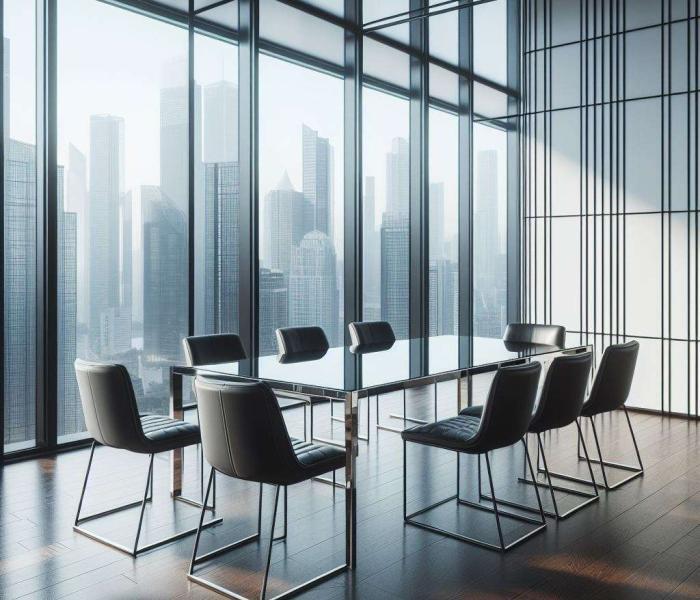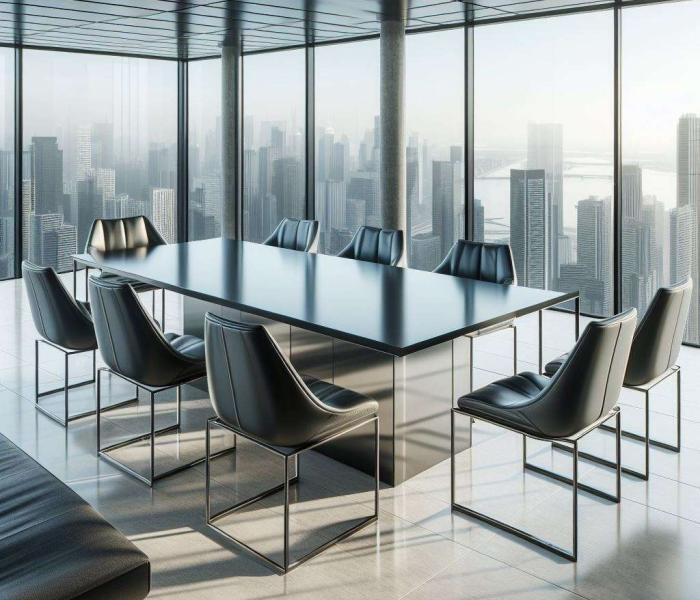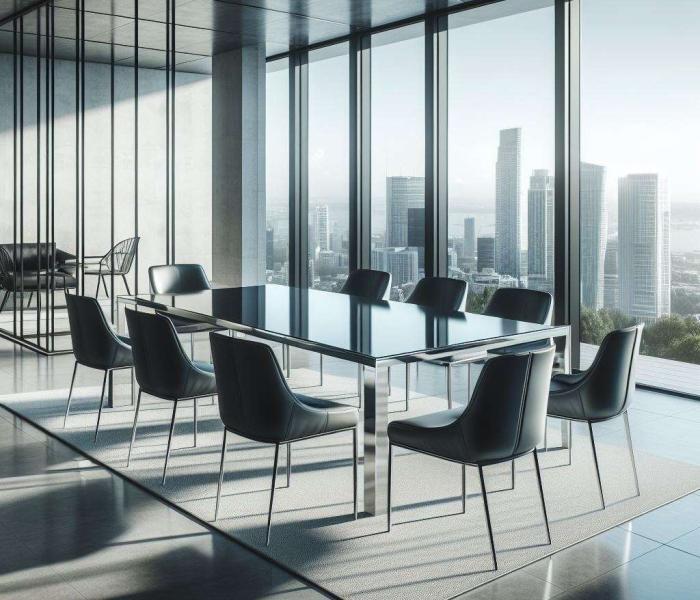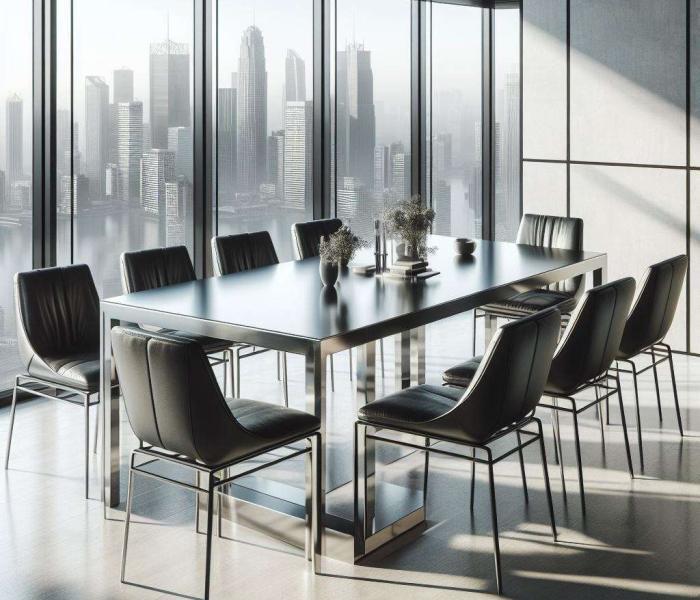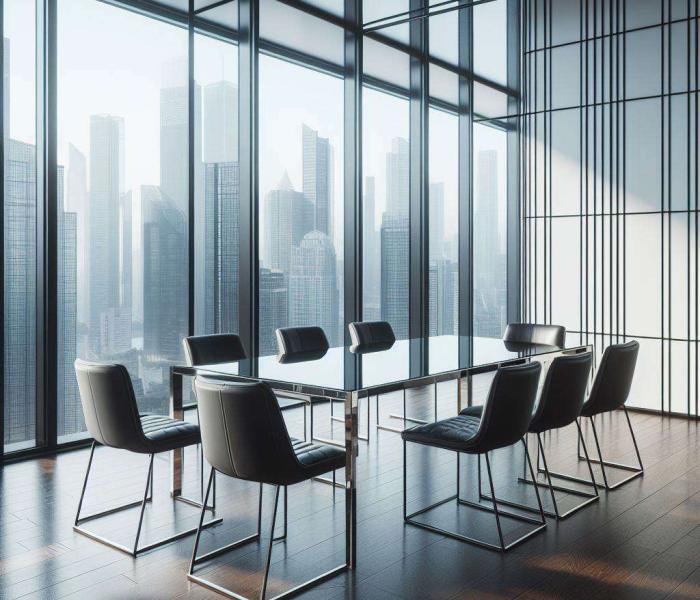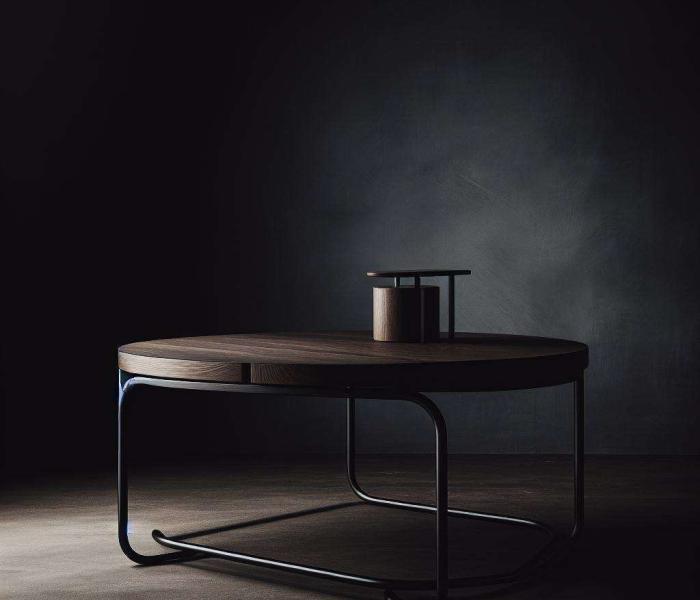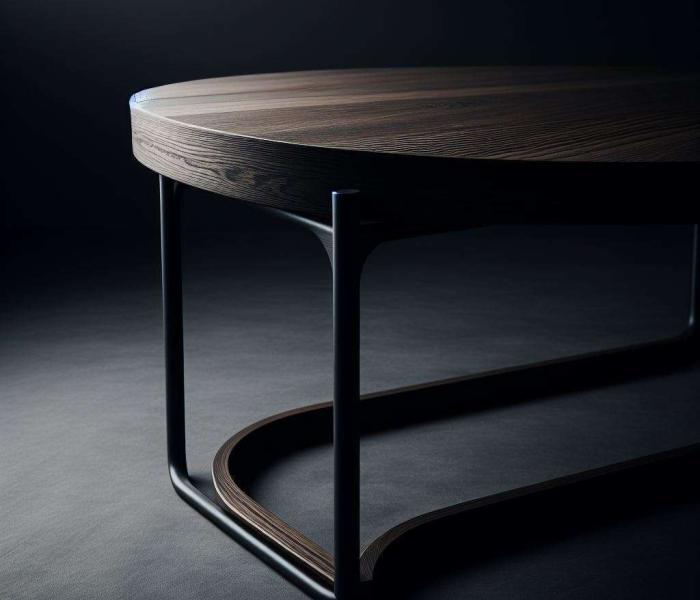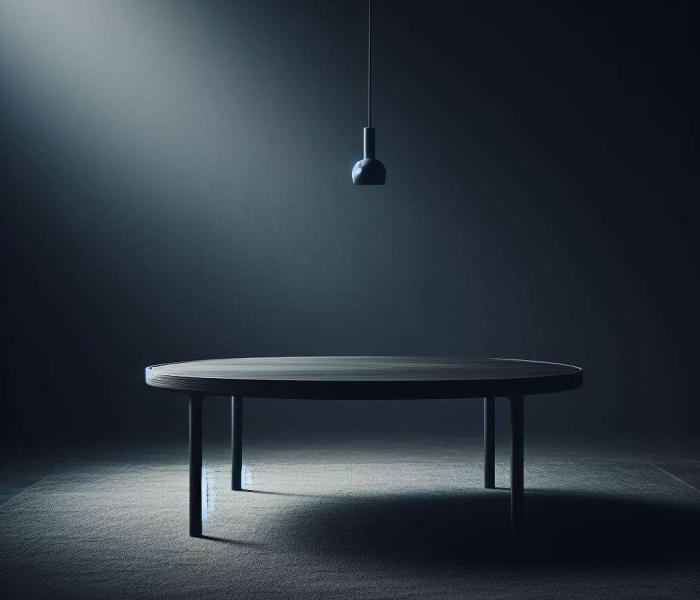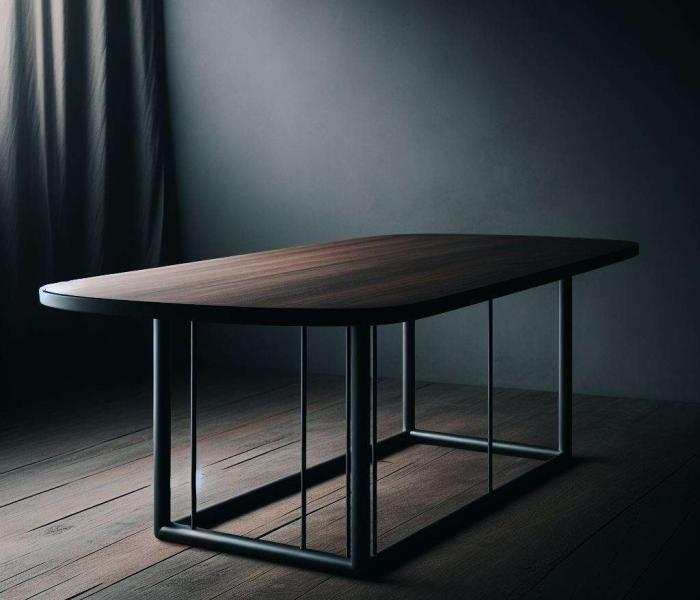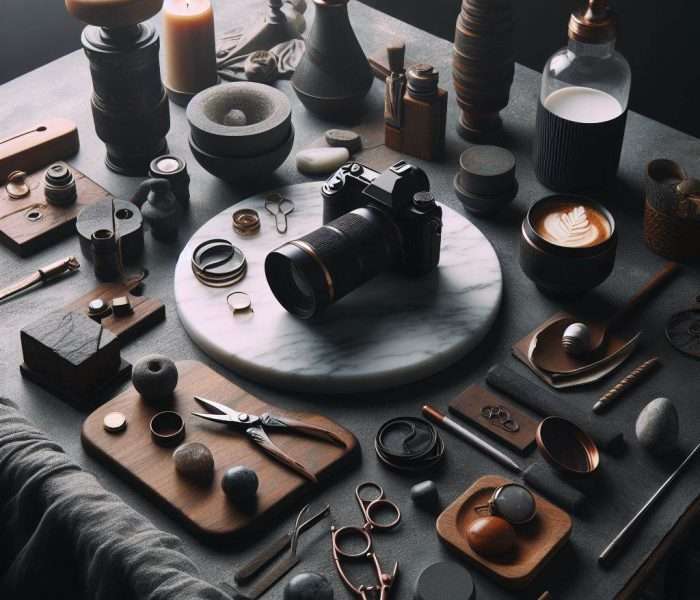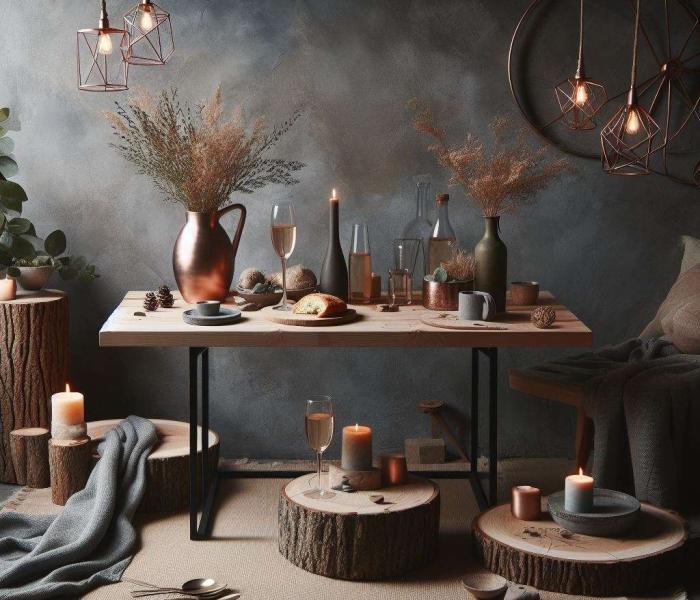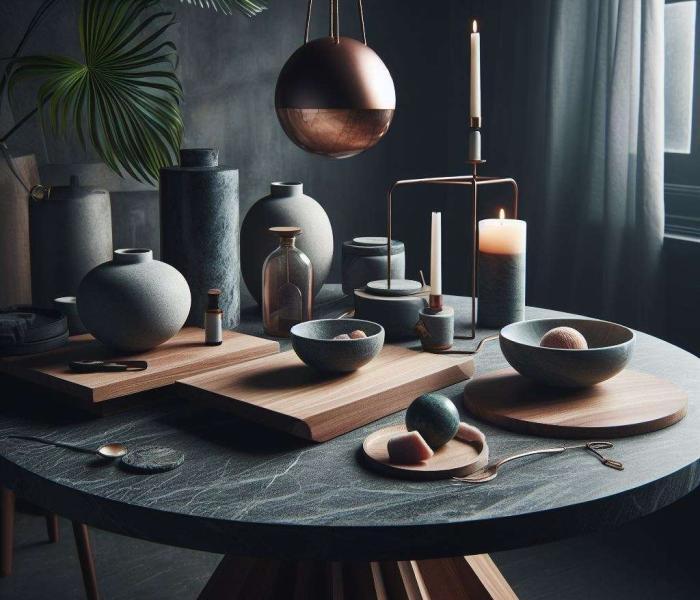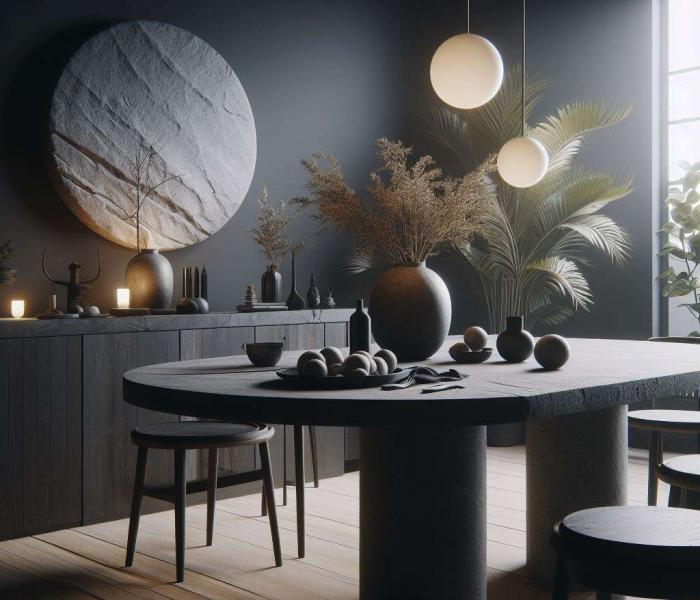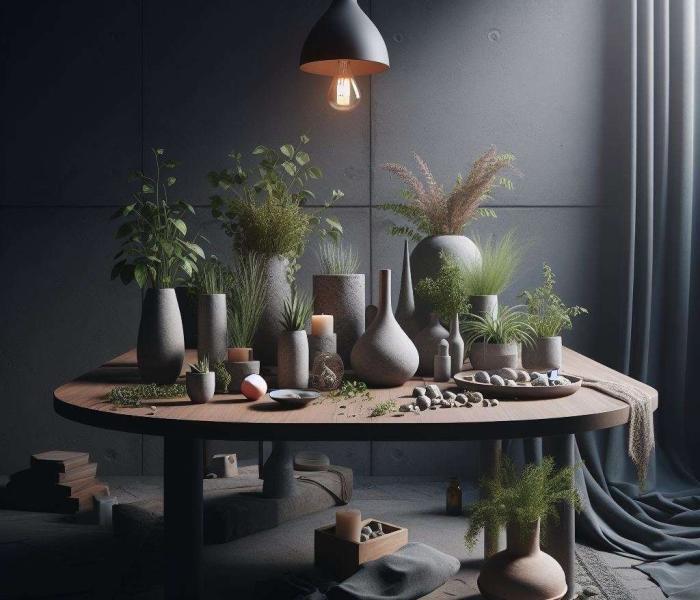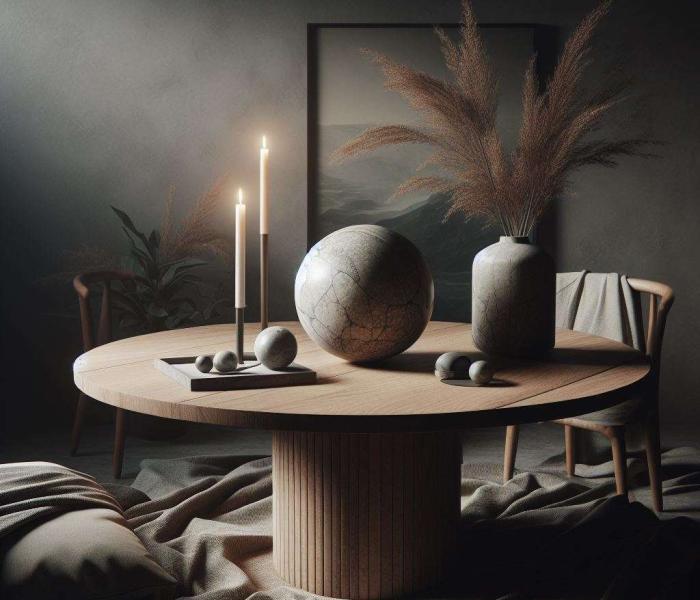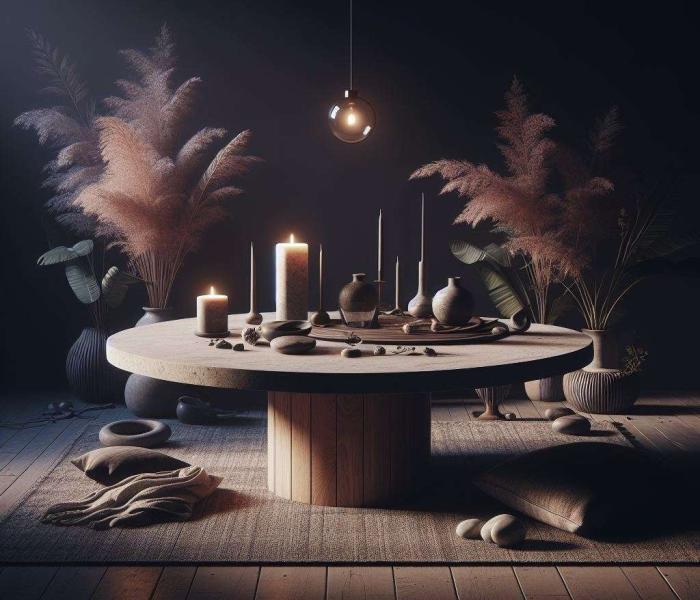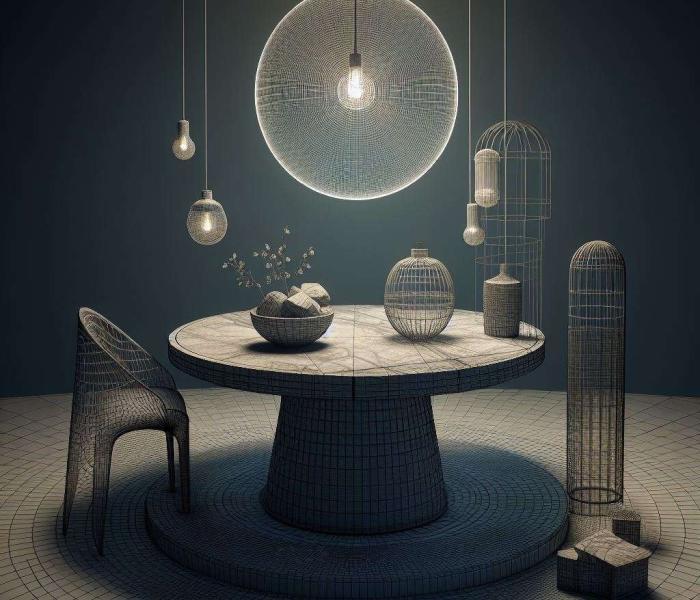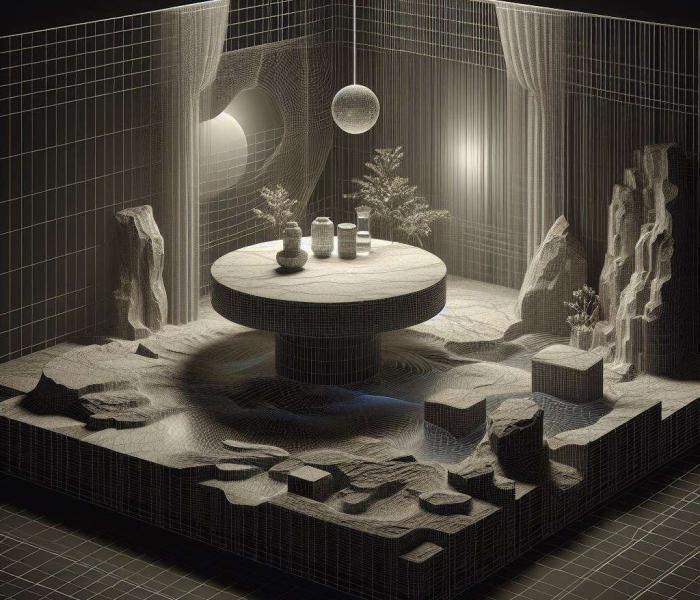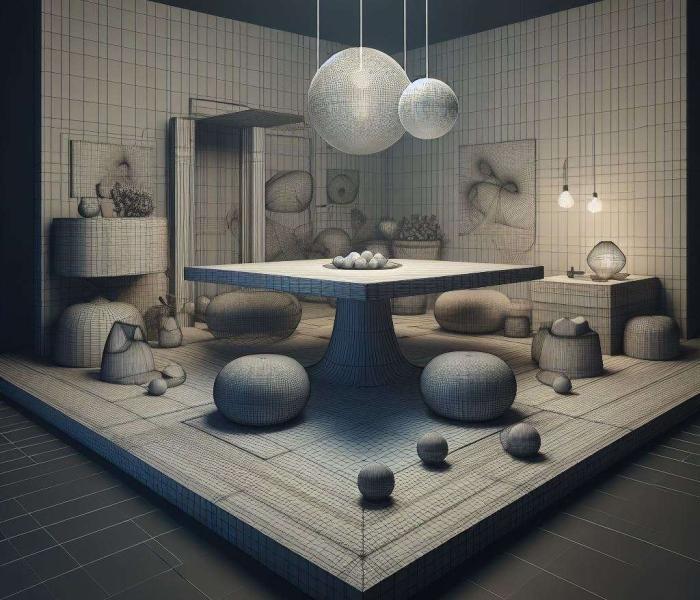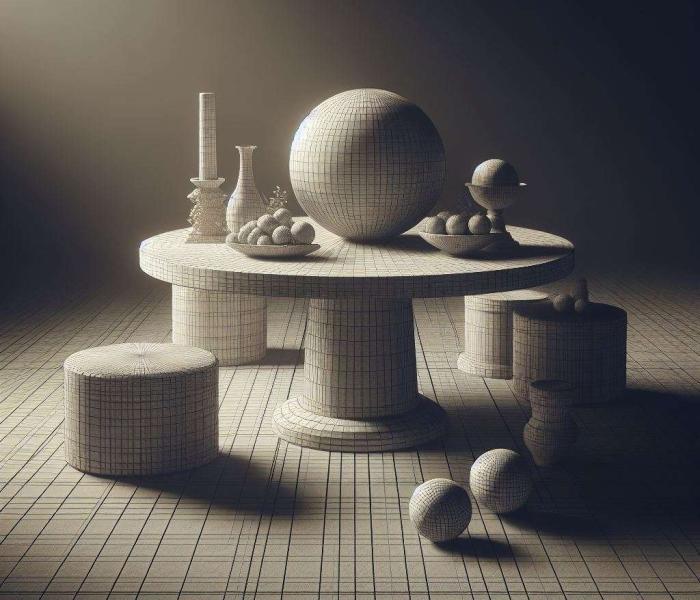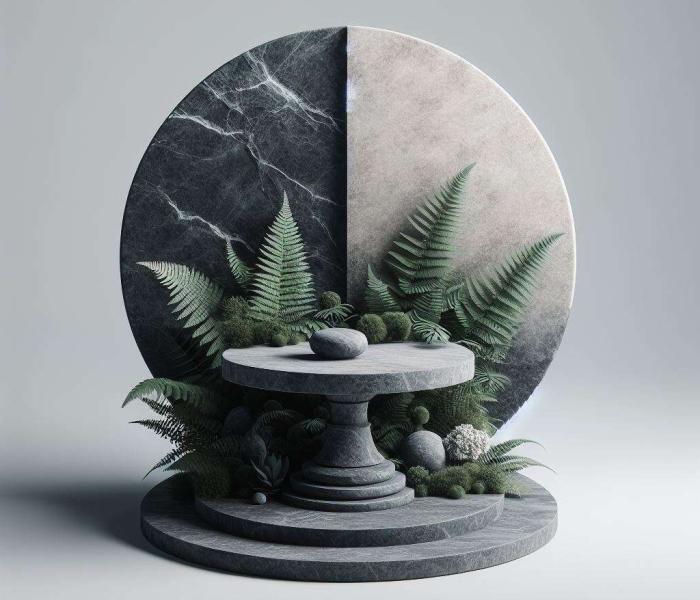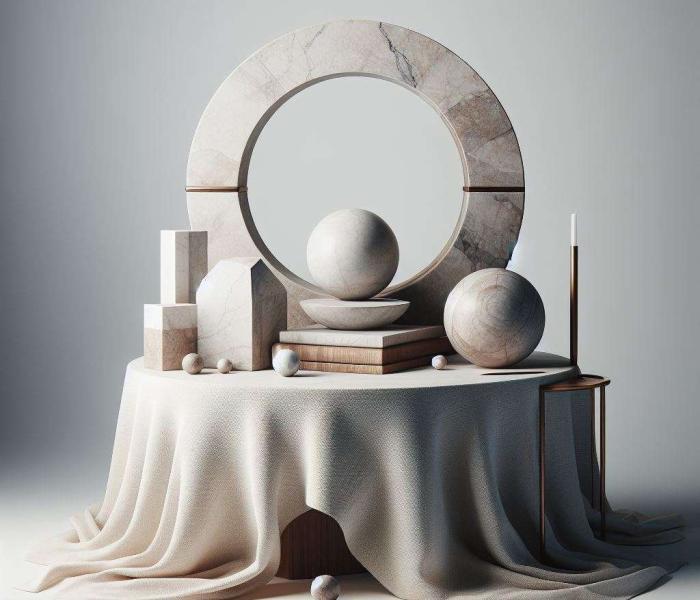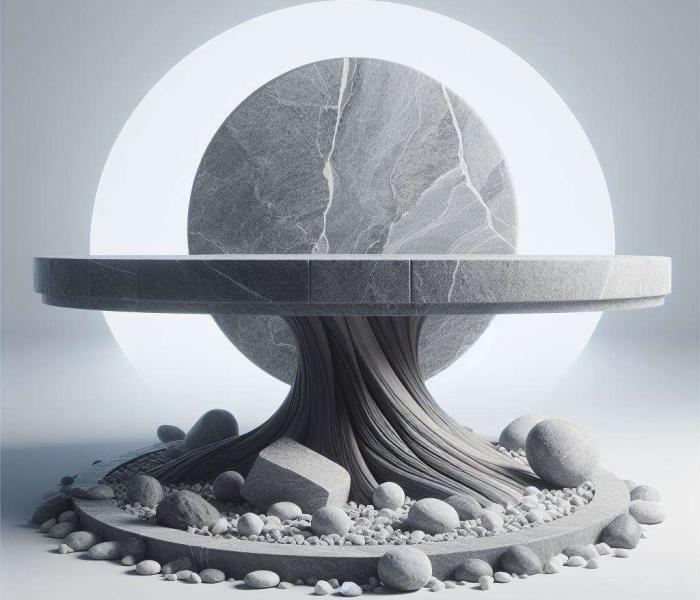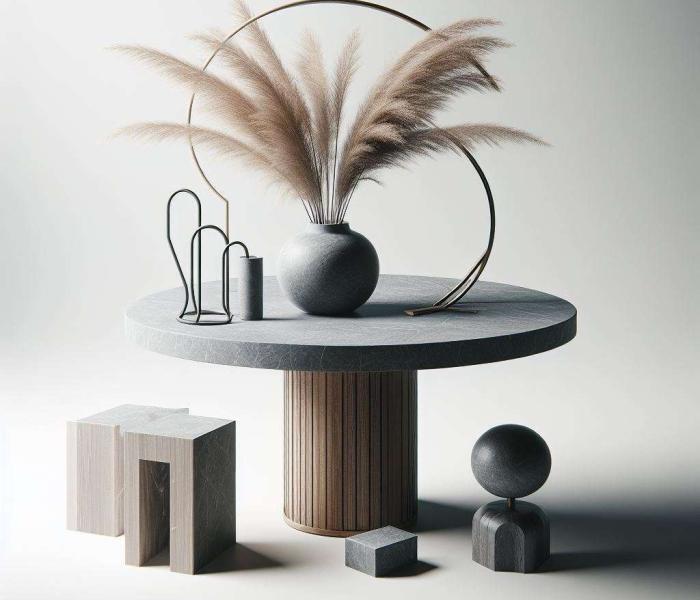AI Based Design
Table Design
Table design is a fascinating and versatile subject that combines both artistic and functional aspects. Tables are more than just pieces of furniture; they are central elements in our living and working spaces, serving a variety of purposes while shaping the style and atmosphere of a room.
An important aspect of table design is the design. Tables can be designed in a variety of shapes and sizes, from classic rectangular or square shapes to round, oval or unconventional geometric designs. The choice of shape often depends on the function of the table and the overall aesthetic concept of the room. Rectangular tables often look formal and textured, while round tables can create a cozier and more inviting atmosphere.
In addition, the material plays a crucial role in table design. Tables can be made from a variety of materials, including wood, glass, metal, plastic, and even concrete or marble. Each material has its own unique characteristics and aesthetic qualities that affect the appearance and functionality of the table. Wooden tables exude warmth and naturalness, while glass or metal tables can have a modern and minimalist look.
The details and embellishments of a table also add to the overall effect. From simple, clean lines to intricate carvings or embellishments, the design of tables can vary greatly and reflect the personal taste of the designer or the client. The legs of a table can also play an important design role, whether through a slender and elegant design or through creative and unusual shapes.
Another important aspect of table design is functionality. Tables must not only look good, but also serve their purpose. This means that they need to be stable and durable to withstand daily use, while also being able to offer practical features such as extendable or folding elements to adapt to different needs.
Overall, table design is an intriguing and multi-layered subject that requires a careful balance between aesthetics, functionality, and personal style. From classic and timeless designs to modern and innovative concepts, there is an endless variety of possibilities to find the perfect table for every room and taste.
There are several important aspects involved in the design of a table, which affect both the aesthetic impact and the functionality of the table. Here are some essential aspects:
- Function: The table must serve its intended purpose. Depending on the intended use, this can be a dining table, a desk, a coffee table, or a bedside table. The design must therefore meet the requirements and the context of use.
- Shaping: The shape of the table is crucial to its appearance and functionality. Rectangular or square tables are often classic and offer an even distribution of seating or usable space, while round or oval tables can create a more intimate atmosphere.
- Materials: The choice of materials affects both the appearance and durability of the table. Wood is a popular material for tables because it is warm, durable, and versatile. Other materials such as glass, metal, concrete or plastic can also be used to achieve different aesthetic effects.
- Details and embellishments: The details of the table, such as leg shapes, surface textures or decorations, can have a major impact on its appearance. Simple, clean lines can create a modern and minimalist look, while carvings or embellishments can convey a more traditional or opulent style.
- Proportions and measurements: The proportions and dimensions of the table should be carefully adjusted to ensure an appropriate balance in the room. This includes the height of the table in relation to the seat height of the chairs, as well as the size of the table in relation to the available space.
- Stability and construction: A well-designed table should be stable and durable to withstand daily use. The construction and fasteners such as legs, table top and braces should be carefully planned and executed to ensure a solid structure.
- Adaptability: In some cases, it may be important that the table can be adapted to different needs. This can be achieved through extendable or folding elements that allow the table to be enlarged or reduced as needed.
By carefully considering these aspects, a well-designed table can be both functional and aesthetically pleasing and make a valuable contribution to the design of a room.
